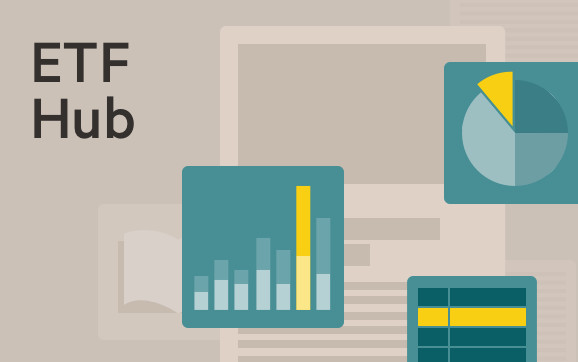Technology sector set to lose more titans in reclassification

Simply sign up to the Exchange traded funds myFT Digest -- delivered directly to your inbox.
Latest news on ETFs
Visit our ETF Hub to find out more and to explore our in-depth data and comparison tools
The already denuded technology sector is about to be stripped of yet more companies in the latest shake-up of industry definitions, pushing stock concentration to unprecedented highs.
Back in 2018 erstwhile tech titans Facebook (now Meta), Netflix, Twitter, Snap and Alphabet, the parent company of Google, were reclassified as communication services companies under the widely followed Global Industry Classification Standards (GICS) framework. With Amazon already classed as a consumer discretionary company, this means only one of the infamous five FAANGs — Apple — was actually technically still a tech stock.
Now Visa and Mastercard, two of the five largest remaining technology companies, are about to be reclassified as financials, alongside the likes of PayPal and Fiserv, while Automatic Data Processing and PayChex are among those being shipped off to industrials.
The moves will raise the weighting of Apple and Microsoft, which already account for a combined 44.4 per cent of the S&P 500 Information Technology sector, to almost 50 per cent.
“The changes reinforce our unfavourable view on tech exchange traded funds, which will grow more concentrated. We prefer equal-weighted sector ETFs,” said analysts at BofA Securities.
The impact will vary widely from fund to fund, however. The $158bn Invesco QQQ ETF (QQQ), often thought of as a tech fund, will be unaffected as it invests in the largest non-financial Nasdaq-listed companies irrespective of sector, ranging from PepsiCo to Walgreens Boots Alliance and Marriott International.
The repercussions for the $49bn Vanguard Information Technology ETF (VGT) and the $40.1bn Technology Select Sector SPDR ETF (XLK), the world’s two largest sector ETFs, according to data from Morningstar Direct, will differ, however — in part because some are already as tightly concentrated as US regulations permit.
Under the US Internal Revenue Code, regulated investment companies, which include funds, must ensure that no more than 25 per cent of their assets are invested in a single issuer, or company, at the end of each quarter, and that the sum of the weights of all issuers representing more than 5 per cent of the fund should not exceed 50 per cent.
The S&P 500 Technology Select Sector Index, tracked by XLK, already appears to be fully maxed out by these parameters, with Apple, Microsoft and Nvidia, the third-largest remaining tech company, having a combined weighting of 50.45 per cent, and Apple alone at 23.04 per cent.
This means their weight cannot rise any further post the rejig, which for S&P indices will occur after the close of trading on March 17.
As a result the index, and any fund tracking it such as XLK, will be underweight the big three, vis-à-vis their underlying market capitalisations, and overweight the remaining tech companies, headed by Broadcom, Cisco Systems and Salesforce.
Matthew Bartolini, head of SPDR Americas research at State Street Global Advisors, said the changes were “relatively minor from a weighting perspective and the fund will continue to have a very diversified exposure to the technology sector”.
In contrast, VGT tracks small and mid-cap tech stocks, as well as the blue-chip names in the S&P 500, so its exposure to the largest companies is somewhat diluted.
As of January 31, the latest available data, VGT’s combined exposure to Apple, Microsoft and Nvidia was 43.6 per cent, giving it headroom to rise further when MSCI (whose index VGT tracks) implements the GICS changes, which will occur in May.
Thus VGT’s exposures will probably be in line with the underlying market caps, but it will become more concentrated in a handful of stocks.
Vanguard said it was still analysing the likely impact on its funds, but added that “GICS changes will have little impact on investors in broadly diversified equity funds, like Total Stock Market Index or 500 Index”.
The story is different again for the $8.8bn iShares US Technology ETF (IYW), which tracks a version of the Russell 1000 Technology index. FTSE Russell does not follow the GICS framework, instead using its own Industry Classification Benchmark.
As a result, IYW invests in some companies off limits to VGT and XLK, such as Meta, Alphabet and Pinterest. The forthcoming GICS changes will narrow the divide however, as FTSE Russell does not classify Visa and Mastercard as tech stocks (they are instead ranked as America’s two largest industrial companies).
Latest news on ETFs

Visit the ETF Hub to find out more and to explore our in-depth data and comparison tools helping you to understand everything from performance to ESG ratings
The ripples from the GICS rejig will spread further still. BofA believes it will lead to net selling of the payments giants, with tech funds selling $15bn worth of stock but financials funds buying just $11bn.
With a combined market cap of almost $800bn, Visa and Mastercard are on track to become the second and fourth-largest stocks respectively in the S&P 500 financials sector.
Bartolini supported the transfer of Visa and Mastercard saying they “should probably be in financials, given their relationship to the financial industry itself. That change is really welcomed by investors, as far as the conversations we have had,” he added.
As to the conflation of the FAANGs acronym with technology, Bartolini said: “It’s catchy, it caught on and it can lead to confusion.
“It became mainstream in the financial lexicon and it’s unlikely to go away, even though FAANGs is not representative of technology or innovation or high growth.”
Comments